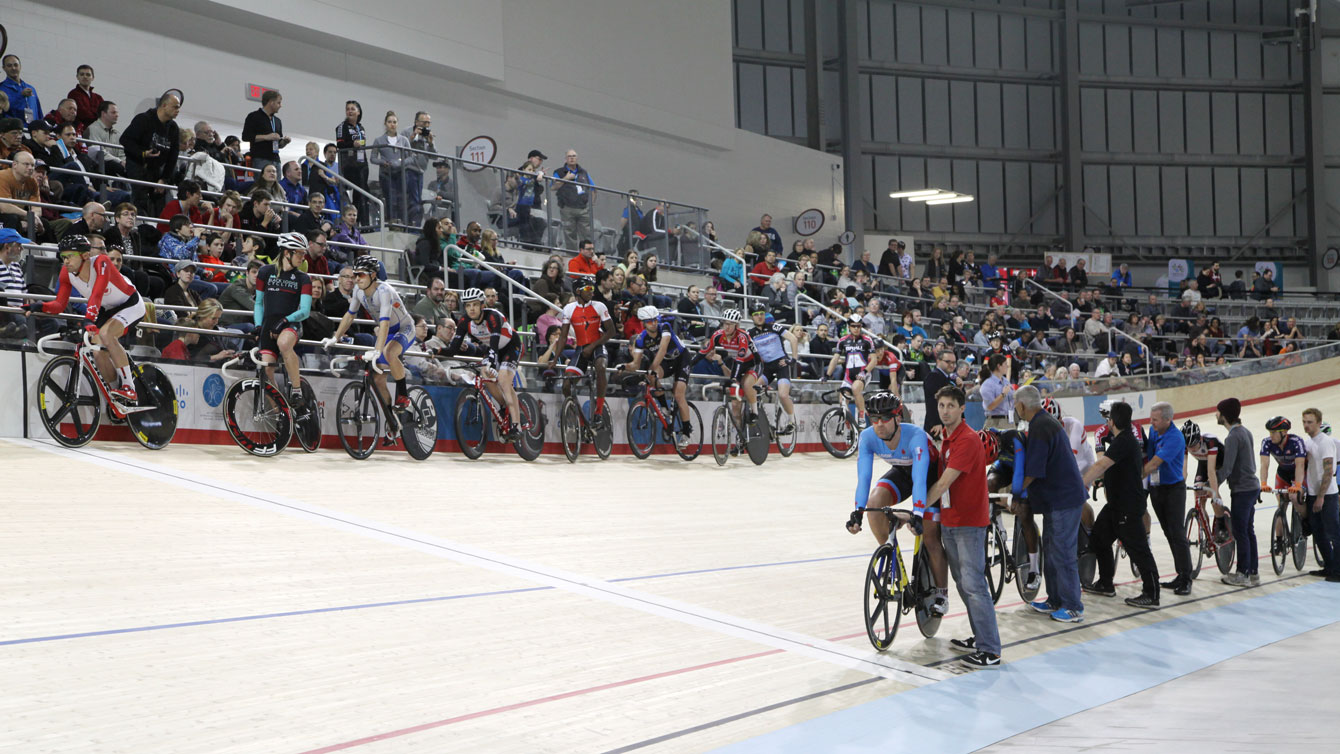Nomads no more, Canada’s track cyclists come home
Canada’s national track cycling team was all smiles this past weekend in Milton, Ontario.
“I compare it to the best velodromes in the world.” – Hugo Barrette
“I’ve been racing for 12 or 13 years and it’s the first time I’ve done an international competition at home.” – Monique Sullivan
“Having international riders here now I almost want to go around boasting a little bit. ‘This is our track. You’re in our home now.’ I’ve never had that feeling before.” – Jasmin Glaesser
“Just the past two weeks, being able to race but sleep in my own bed has been phenomenal.” – Joseph Veloce
For reasons both big and small, the opening of just the second 250m covered velodrome in North America is a huge step forward for track cycling in Canada. No more commuting to Los Angeles for proper training, cutting down on costs and the distance from family. No more trying to make do at home with a shorter-than-standard track, which can only improve performance.
“Even though it’s only 50 metres, just the G-forces and the way you come around the corners, they change quite a bit,” says Joseph Veloce of training on a 200m track. “In the sprint, you’re looking back a lot so you have to be comfortable to steer your bike in a straight line while looking back. The way you ride a track, the curves are different, so it’s a huge difference.”
As one of the great legacy venues from the Toronto 2015 Pan American Games, the Milton velodome will give a new audience exposure to track cycling, a sport which is hard to find on Canadian TV outside of the Olympic Games.
“There’s a lot more athletes that are going to have access to this facility,” says Jasmin Glaesser. “Not just my generation but looking down the road I hope us training here will inspire a new generation of cyclists to get into the sport and start young.”
Having a world-class facility at home is a luxury enjoyed by many of Canada’s winter athletes, thanks to Calgary 1988 and Vancouver 2010. A newcomer to the cycling team, Kate O’Brien is familiar with that privilege, having come from bobsleigh in which she narrowly missed qualifying for Sochi 2014.
“It was kinda funny,” she said, describing the first day the team walked into the Milton velodrome. “Monique (Sullivan) was awestruck saying ‘I can’t believe we’re in Canada right now.’ I’ve never had so many people say you’re coming in at the best possible time. We have the most recognition and support and this new facility.”
“It’s the best feeling in the world, building towards Rio,” said Hugo Barrette. “To know that we’re going to have all the support for us on a daily basis, that’s gonna make a huge difference. We’re already near the podium internationally, but that’s really gonna top up the level.”
Already racking up international medals is the women’s team pursuit, which has been on the podium at seven straight World Cup and world championship events after capturing bronze at London 2012.
“The five of us that usually travel together, we’ve really grown to be a tightknit group,” said Glaesser, who was the youngest member of the Canadian cycling team in London at age 20. “Just going into a race, being able to trust your teammates and be on the start line so confident in not just your preparation but in the preparation of the team, it’s a great feeling and something I’ve really learned to treasure.”

Three-quarters of Canada’s pursuit team at the Milton International Challenge, (L-R) Allison Beveridge, Stephanie Roorda and Jasmin Glaesser.
And while the pursuit crew is still the focus of Olympic medal talk, at Toronto 2015 the sprint squad is also aiming high. Barrette in particular wants a Pan Am gold medal in the keirin, an event in which he has been top-10 on the World Cup.
“I’m looking to really make a statement as to where we are as a program. The Pan American Championships really changed in the last years, a lot of dominant riders. So if you win at Pan Ams, you’re really saying I can win at the Olympics, I can win pretty much everywhere.”








